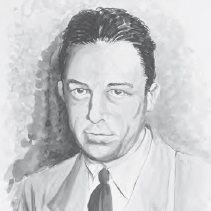Continental PhilosophyOther Existentialists |
What were the ideas of some of the humanist existentialists? |
Hans Jonas (1903–1993) was influenced by phenomenology as well as existentialism, but some of his most original work has been directly relevant to environmental concerns and thought about the nature of life. In The Imperative of Responsibility (1979) he argues for ethical responsibility for the planet to fight the incursions of technology. In The Phenomenon of Life (1966) he argues against standard biological approaches that objectify living things and seek to explain their behavior via mere chemistry or mechanistic hereditary forces. Jonas’ positive thesis is that all life forms, even single cells, have some form of awareness and they strive from their own physicality and perspective on the world. (Awareness on a cellular level does not imply the presence of the cogito—a mind—it is sufficient if the living entity “behaves” in a way that enhances its life, or attempts to do so.)
Emmanuel Levinas (1905–1995) was a French Jewish philosopher who was originally from Lithuania. Levinas criticized the philosophical tradition in which things other than an individual mind are represented to that mind in ideas or some other “mental content.” He thought that the paradigm for understanding consciousness was the face-to-face interactions between human beings. Such interactions are both particular and indescribable, as well as of inestimable importance. Levinas’ main works are Totality and Infinity (1964), Otherwise than Being or beyond Essence (1974), Difference and Transcendence (1999), and Between Us (1998).
Albert Camus (1913–1960), like Søren Kierkegaard (1813–1855), had a “burning question.” In his case, it was, “Why should a human being not commit suicide?” The question arose for him from his apprehension of the human condition as absurd, together with the absence of God and a forever frustrated search for meaning. Camus was a friend of Jean-Paul Sartre (1905–1980), but they became alienated from each other as a result of Camus’ critique of communist tyranny in his essay im favor of revolutionary struggle, The Rebel (1951). His novel The Plague (1947) dramatized the ever-presence of death in human life. In his nonfiction essay The Myth of Sisyphus (1942) Camus claims that meaning can be found by affirming the absurd and then rebelling against it, as in “imagine Sisyphus happy.” Sisyphus’ punishment by Zeus consists of eternally rolling a large boulder up a mountain, only to begin again after he has reached the top and the boulder has rolled down again. His crimes were first to put Death in chains and then escape death himself. Camus was awarded the Nobel Prize for Literature in 1957; his own death in a car crash raised the question of his suicide.
Paul Ricoeur (1913–2005) wrote on a variety of subjects, including existentialism, phenomenology, ethics, psychology, and theory of language. All of his work was distinguished by a deep engagement with key figures in the history of philosophy. His Freedom and Nature (1950) was received as a rejection of Sartre’s theory of freedom. Ricoeur argued that willing always has an involuntary component, which works as a kind of built-in resistance. What is voluntary consists of motive, decision, and consent, each of which has its own involuntary “moment.” The involuntary moments include birth, death, character already developed, the body, and the unconscious. (First, it’s not clear that Sartre equated freedom with acts of will, because freedom is present in all consciousness. Second, Sartre would have said that what we accept or recognize as involuntary requires a free choice of bestowing that particular meaning.)

